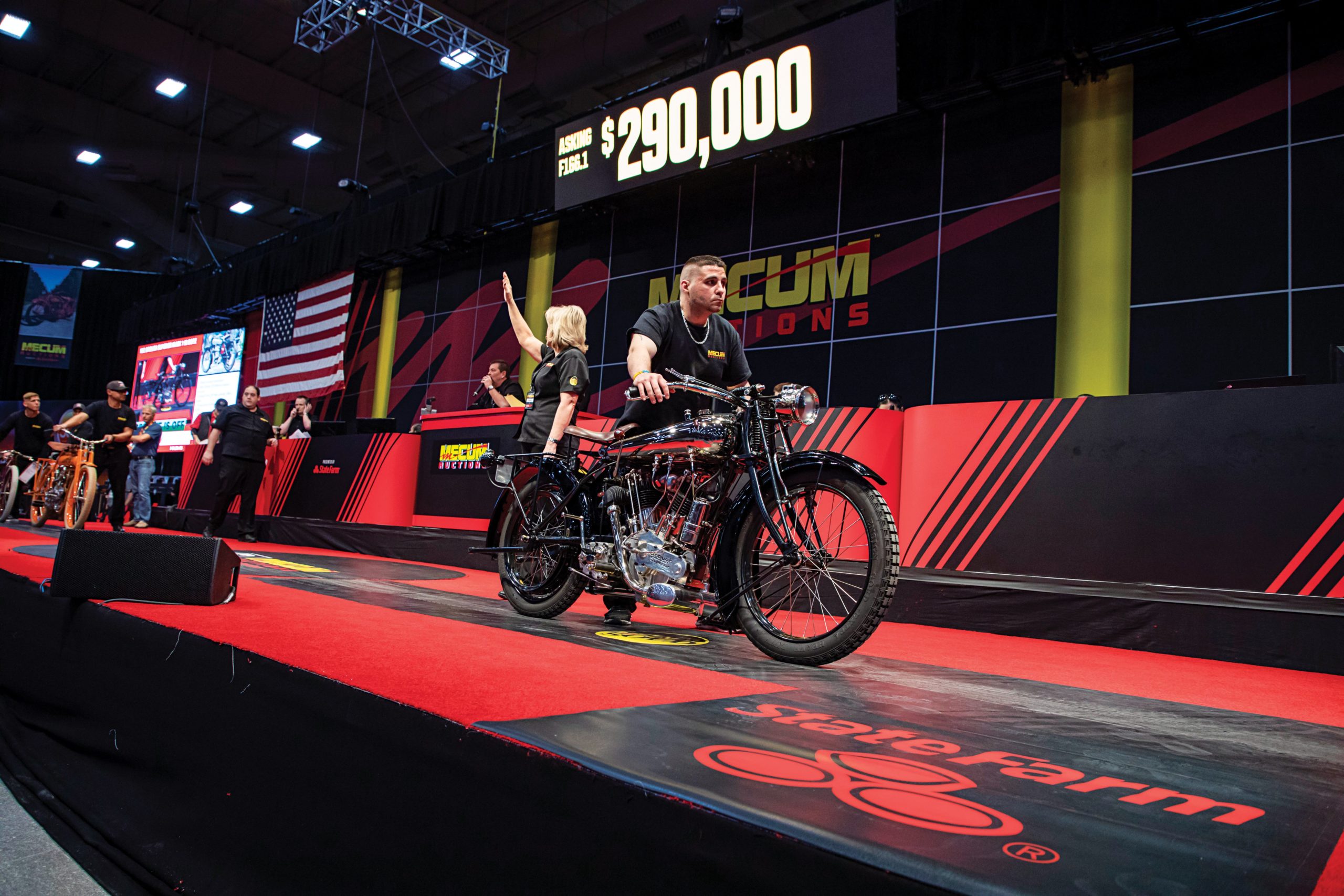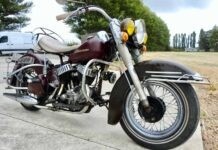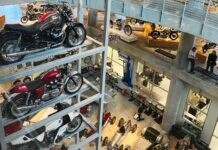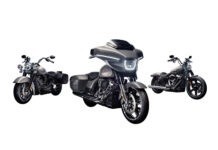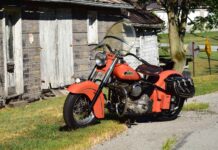
Sin City Selloff
Words by Kip Woodring
Photos by Woodring and Mecum Auctions
The whole thing was my friend Paul’s idea. He’d been to Mecum’s Las Vegas auction last year and said he wanted to see the look on my face the first time I laid eyes on the massive spread of motorcycles filling the city’s largest indoor arena.
It was quite a look… so I’m pretty sure I owe him big-time.
I’d been to motorcycle auctions before, but nothing like this. This was nearly 1900 antique, classic and collectable machines (not to mention art and various bits ’n’ pieces) at the South Point Hotel at the southern tip of the Strip. And when Paul squired me onto the mezzanine above the arena … Wow! Blue-chip, investment-grade bikes everywhere, and lots of ’em. The best part? Many were built in mere handfuls (and survive in numbers you can count on one hand), with most valuing at six figures and then some. Whoa.

The first thing that resonated once down on the arena floor was the vast variety of machines, from the dawn of things (a De Dion trike from 1900, for instance) to 21st Century stuff. Secondly, it turns out the market is a tad soft these days, so you could spend as little as a few hundred bucks for something semi-collectible. Sure, the focus is always on top-dollar bikes, but Mecum’s format and scale caters to all tastes and budgets – which is cool.
Most of the motorcycles are familiar, but there were a few unknowns (to us) and some that were definitely strange. For me, that meant the Shaw. Built in a dinky town in Nebraska as a clip-on bicycle motorization kit in 1905, then graduating to motorcycle status in the roaring twenties, the Shaw resembles an early Indian in my eyes, and they are definitely not your average moped. In spite of more than a half-century in this industry, I had never heard of a Shaw prior to this auction. And Mecum had a half dozen! I want one!

Just so you know, I had no intention of buying at this auction; I was there merely to observe and enjoy. But next time I’m coming with cash. Because you just never know when you’ll fall for some funky relic.
With various criteria – Price (not to be confused with value), Provenance (a bike’s back story), Originality (a real mine field these days), Rarity (no mystery here), Condition (ditto), Appearance (ditto x2) and Design (not to be confused with styling) – stuck in the back of my skull, my heart yanked me in a dozen directions as we toured the arena. So many motorcycles there, the kinds that would stop you in your tracks if you saw one on the street, here, in one place, and numbering in the thousands. I took hundreds of photos, mostly for mental markers as to which ones I’d actually like to own for my personal fantasy collection. Then we went where the dreams met reality – the auction stage.
As expected, American and British bikes commanded a lot of my – and others’ – attention.

Can you find your ideal collectable at a price you can afford? Well, I’ve had a Jones for some time to own a high-performance flathead. (Not the oxymoron you might think.) Old Indian Scout racers? WR Harley? KR Harley? Big 80-inch UL? Tested and found wanting for one reason or another by my criteria balance. I want a classic I can use on the street, even the freeway from time to time. So, brakes that work, reliable running and other such things are important to me. Lo and behold! Mecum had a KHK in the arena – perfectly imperfect!
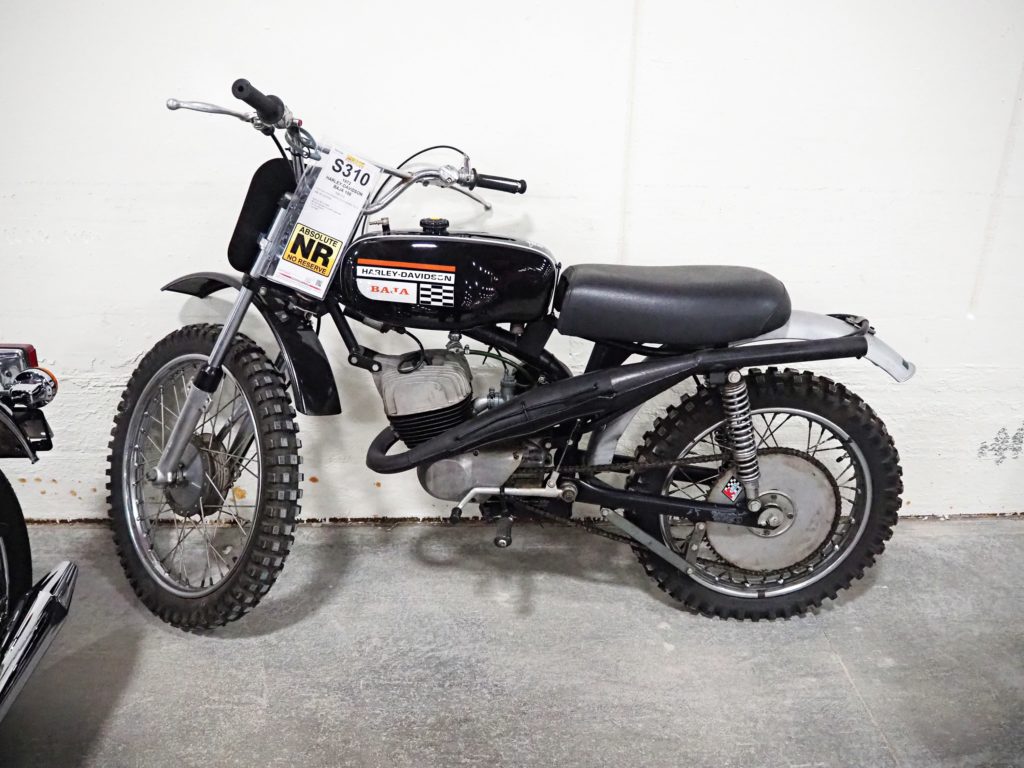
Harley built the KHK from 1954-’56, all of 1163 of ’em, to fight the British invasion. So it ticks the rarity box. The design sported stuff found on H-D racebikes like needle bearings in the cam case. The K-series was the first unit-construction V-Twin from Milwaukee and shifted on the right, plus it’s a factory ’stroker so it’s fast! Design box check! It’s a rider, complete with peanut tank, later frame and front disc. Not exactly original, but good for my purposes. Same with the condition box, again, it’s a rider. Appearance, on the other hand, pretty high in this beholder’s eye. Provenance? None, but a deep curiosity about how this bike came to be – this bike. But here’s the biggie. A mint, stone stock, 100-point KHK sold by Mecum at this same auction fetched $24,500! Out of my financial reach and really too nice to ride. This one hammered for an affordable $4400 because of its flaws. The precise flaws that made it (literally) a mongrel rather than a purebred, and plenty desirable for me – damn it! See how this works?
Speaking of H-D racebikes, a certain factory cinder track racer at the Mecum madness boasted provenance and rarity, with a big dose of design thrown in. Only a handful of these Harley-Davidson CAC racers were ever made, and the one mentioned was ridden by 1930s super-racer Joe Petrali. It ended up selling for $181,500, which proves it’s still a winner once ridden by the winningest rider ever.
Indian Larry’s first Panhead custom – called Grease Monkey – proved the case when it comes to the value of certain one-off machines in the current collectible motorcycle universe. (Two of Larry’s customs hammered in the top ten!) Whether Grease Monkey is worth anything like $220,000 is a fair question, but there it is! You’ll have to ask Legends Motorcycle’s Rick Salisbury, who bought it. Whether it will retain its value a generation from now is a bet I wouldn’t want to take…but then again, look at the value of any bike Steve McQueen ever touched.

Then there was Greenie. In case you hadn’t heard, Greenie is the motorcycle that changed the game, and may be the most controversial classic to surface in decades. Fact is, I walked right by it at first. Wanna dismiss it as just another mildly-modded 1940 61-inch Knucklehead? Wrong! When it hammered at $220,000 I suspected that rarity, originality and provenance figured greatly in the ultimate value of this otherwise quite-ordinary motorcycle. As I soon learned, that’s a huge understatement!
Nearly fifty years ago this bike was taken in trade for a new Sportster. The dealer, Wayne “Pappy” Pierce, hung onto it until the day he died, because he had a hunch this thing was different. First of all, it had nickel-plating where it should be chrome. It was the first year of a big upgrade of the Knuckle and the last year of pre-war Knuckleheads, as well. But mostly, there was that green paint. Original factory paint, too, paint not shown or offered in any catalog by H-D since 1938. What was the deal? To over-simplify, since its first appearance in the pages of Greg Field’s book Knuckleheads, years of intense research on this unique anomaly finally showed that Harley-Davidson had an unofficial, and previously unrecorded, CVO- type service all the way back to 1926! A special customer could prevail upon the Motor Company to do things like paint and plating (and more) that were not in the official catalog for that model year. Greenie provided the definitive evidence. More than that, it seems some of the equipment in the drive train, engine and transmission was special, as well.
What it all meant in the end was that the standards by which antique machines were judged had to be changed to accommodate “anomalies.” And it also generated a hammer price about three times higher than any normal Knucklehead, restored or original! Now that the existence of such odd-balls has been acknowledged, there might be more out there. How cool is that? Just don’t be tempted to turn unicorns into show horses. If you can find any.
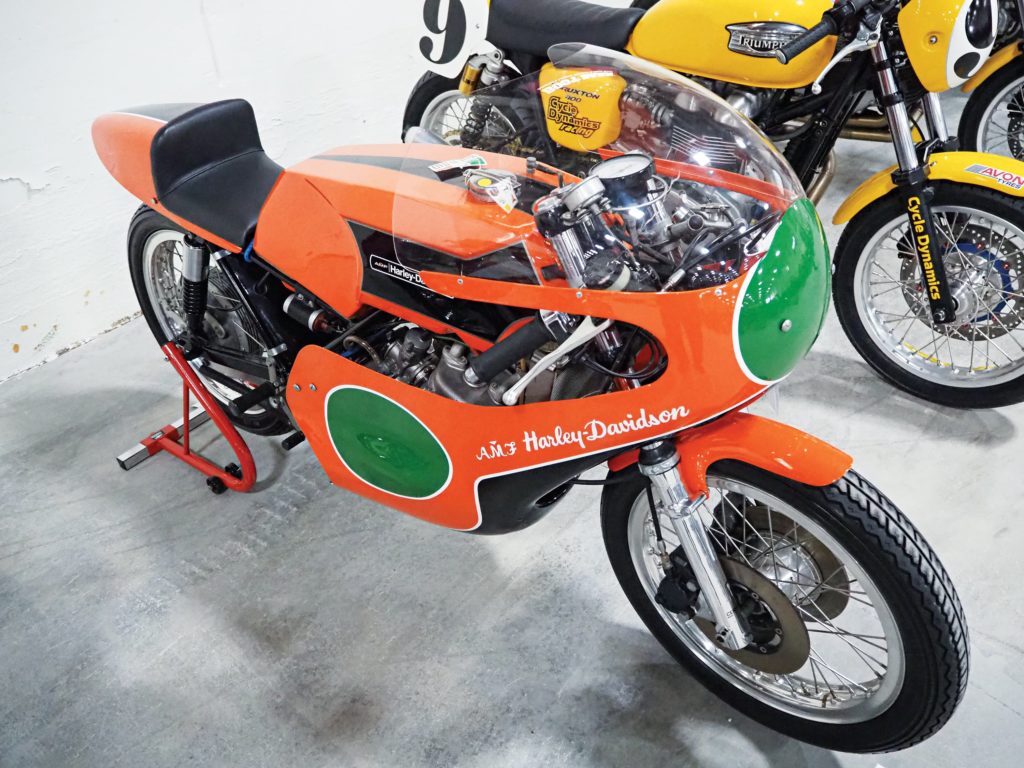
Or, how about a street-legal (in Poland, anyway) VR1000? Only twenty-five were made (to comply with AMA race rules of the 1990s), and this one with zero miles. It scores nearly off-scale in every criterion for “collectible,” yet went relatively cheap at $68,200. Of all the coveted bikes shown here, this one is the major head-scratcher. Must be because, as amazing as it was, it was not a winner.
Indian Scouts were fast and highly competitive in their day, and beyond. (Google World’s Fastest Indian.) But a Crocker Overhead Valve conversion? Well, that was the pinnacle, and there were several of these ultra-rare hot rods at Mecum. They didn’t bring the money that a Crocker motorcycle would in spite of being even rarer and having serious racing cred. But in many ways that just leaves a little room for us normal folks to own one, doesn’t it?
Indian’s magnificent failure, and a bike way ahead of its time, was the one-year-only 1914 Hendee Special Indian. Un-restored, original, bristling with technical innovations for its time (electric lights, electric start, suspension at both ends, etc.) and still underappreciated. At $85,000 for one of about 12 known specimens that still exist, this thing was a steal, and needs to be in a museum. A national treasure and major milestone on the long road from there to here in motorcycle history.
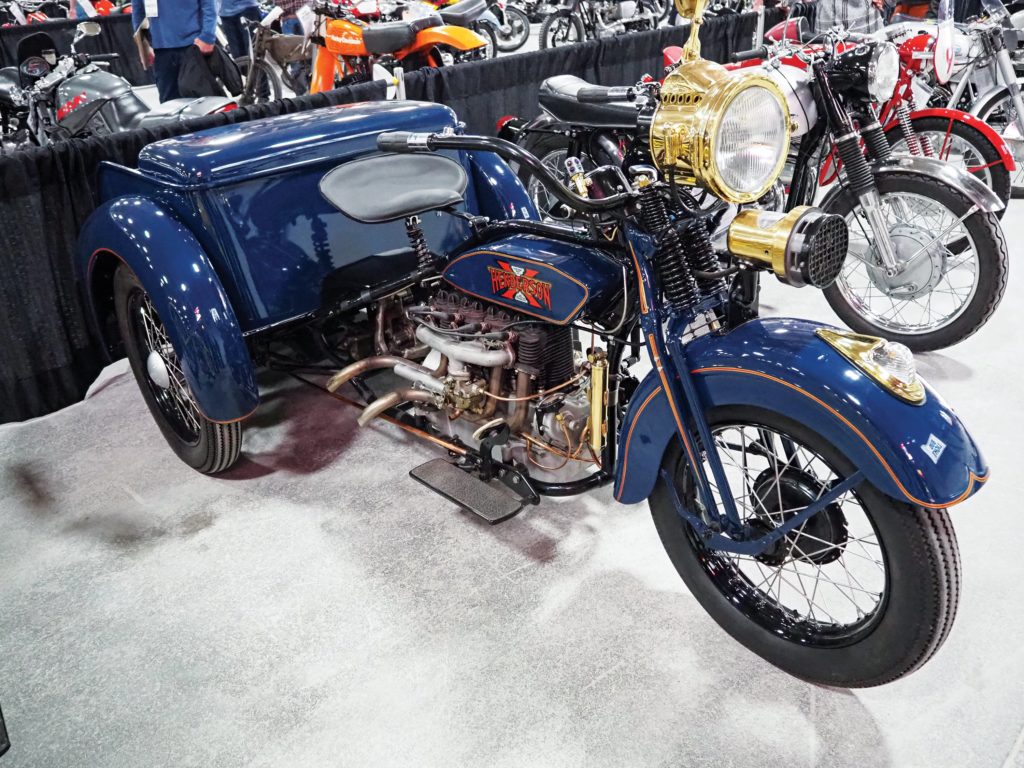
It’s no secret the great British and European machines are worth every penny of what they bring at auction, though the cream of that crop is rapidly pricing out of reach. For instance, I went to this event with my friend Peter, an HRD/Vincent expert if ever there was one. He never said it out loud but hinted constantly how crazy it was that a Vincent Rapide he bought for $500 in the early ’60s (and still owns) has reached the price of a house in his home town.
I know the man who owns “Old Bill,” possibly the most notorious Brough Superior of all. As you might imagine, he can afford any motorcycle he wants – including Old Bill at a heady half a million dollars. He wanted the history and the glory that old bike has, but it is literally one-of-a-kind and virtually priceless, so he wouldn’t, shouldn’t and didn’t ride it. Instead, he commissioned a duplicate, an exact replica, for about $80,000. Now he has a new “Bill” he can use. Rich guys can do things like that. Most of us (including me) can’t. So for me, shopping for motorcycles, via auction or eBay or whatever, means buying something I can ride – period! If that makes me a charter member of the “ride it – don’t hide it” club, so be it.

On the other hand, in my view, the best “value for money” Brit bike has to be the Triumph Daytona 500. Folks with decent memories may recall that these things won at Daytona in ’66 and ’67 thanks to one of the great development engineers ever, Doug Hele. The thing is, most of the knowledge gained by racing actually went into the production bikes. That made the Daytona the best running, least vibratory, most reliable, best handling and best stopping vintage Triumph twin period. In contrast, Bonnevilles bring more money at auction and were arguably the first modern Superbike, while Trident triples bring way less.
A surprise – to me, anyway – was the excitement surrounding some Japanese and Euro off-road and mini stuff. I worked at a Honda dealership when the Mini Trail 50s had just come out, yet I’d never seen this many at once! Every year, every flavor, including a gold version that Honda expert Paul informed me was a factory offering elsewhere in the world. Of course, Steve McQueen had one, an early one, which he had Von Dutch do up, then gave to his kid co-star in the film The Reivers back in 1969. Naturally, it sold for twice as much as any of the others, meaning five times what I’d pay.
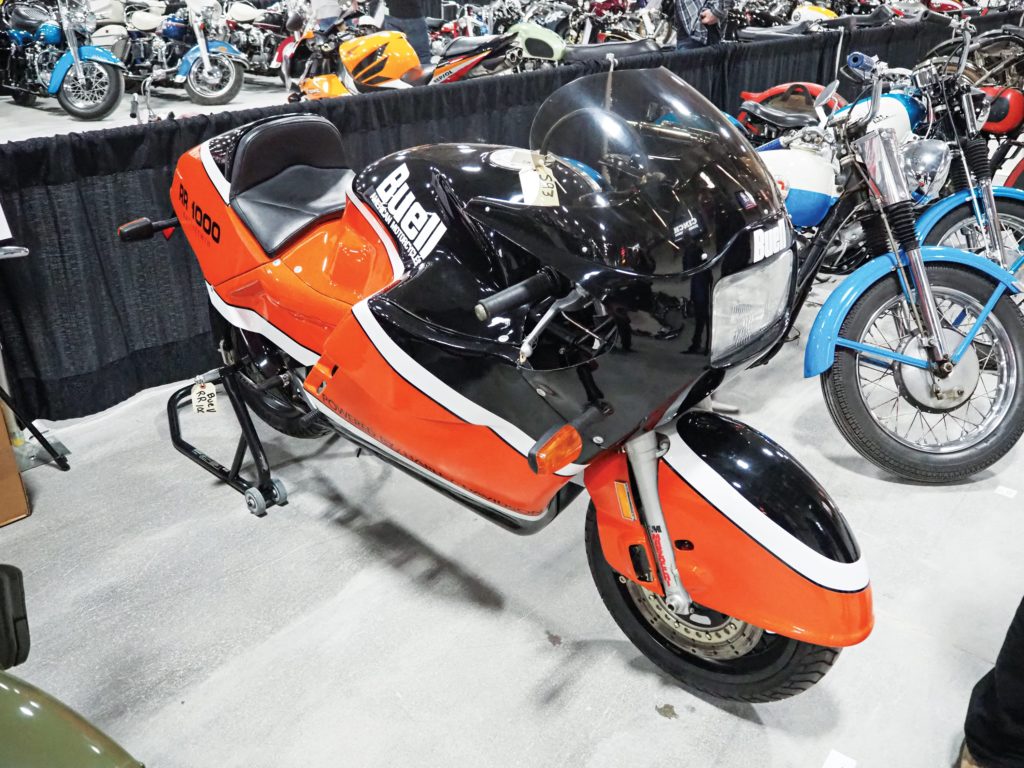
Then there were the dirt bikes, all types and vintages, and all bringing heathy prices. I worked in a Suzuki shop when RM125s were new and never saw a brand-new one looking as good as one that showed up at Mecum’s. I was used to the value of any dirt bike (especially a motocrosser) dropping by half the day it left the showroom. Yet here were dozens of RMs and Elsinores and Huskys and Maicos and CZs all looking brand new and most bringing nosebleed prices. On reflection, it’s good to see them finally get the respect they deserve, because there’s a reason most were referred to as “trick as hell” in the day.
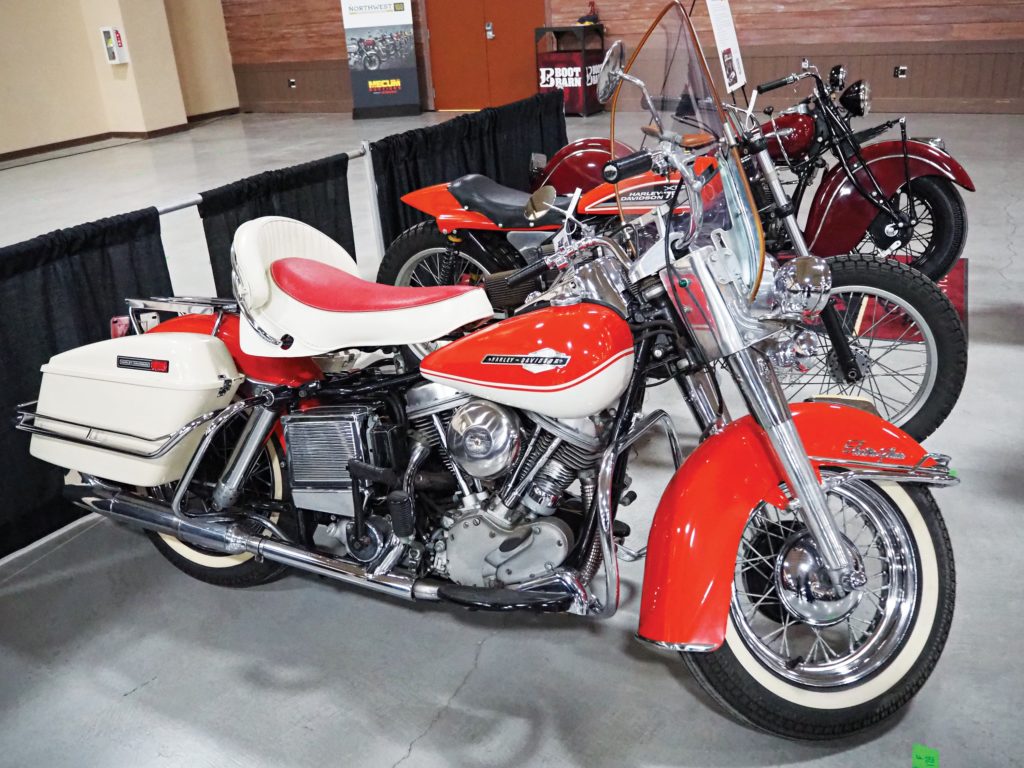
Speaking of respect, it was good to see the value (and prices) of Japanese classics appreciate as they have. That old T500 Suzuki or Honda Magna isn’t going to hit blue chip status anytime soon, but flagship machines from every decade and every Japanese factory were lookin’ pretty good at Mecum’s. A clean first-year CBX, Z1, GT750 or Yamaha RD350 (any of them) brought true technical excellence to the masses and is worthy of praise and purchase for that reason alone. There was time when no matter what, collectors would trip over a brilliant Japanese offering to get to some over-priced European rattle trap. Those days are happily gone.
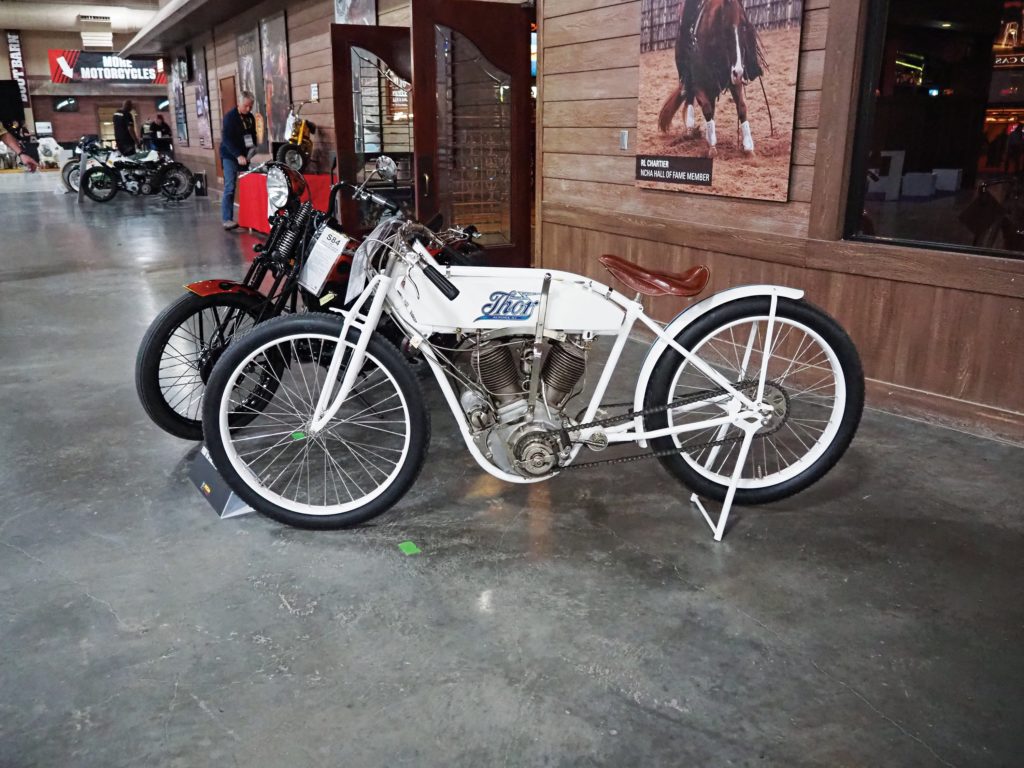
A great many ‘collectors’ these days aren’t. They’re investors, many of whom will flip a classic after looking at it in the living room for a few years, usually at a profit. That’s capitalism, and it’s fine. But to me, the unintended consequences move the cost of collecting out of reach of true enthusiasts. Your views are likely to differ and welcome all the same. Thought you ought to know.
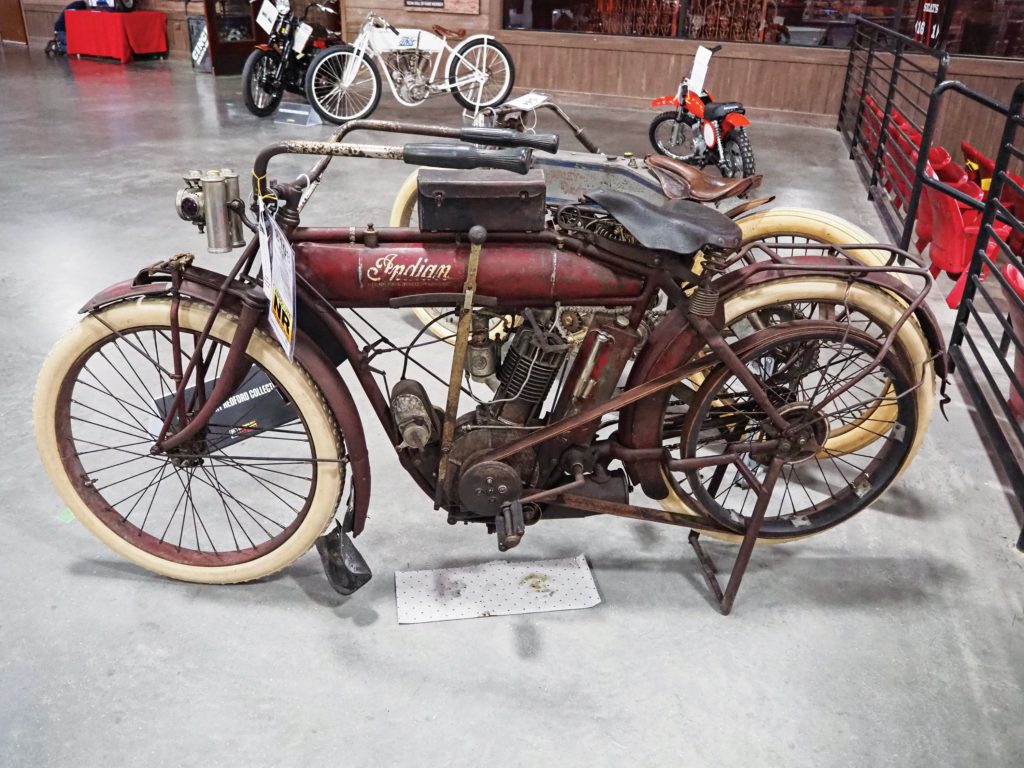
As an FYI, the Top Ten hammer price results at the Mecum Auction in Vegas for 2020 were:
1922 BROUGH SUPERIOR MARK 1 90 BORE – $308,000
1930 BROUGH SUPERIOR SS100 – $239,250
1956 HARLEY-DAVIDSON INDIAN LARRY GREASE MONKEY – $220,000
1940 HARLEY-DAVIDSON EL KNUCKLEHEAD – $220,000
1916 MILITAIRE FOUR CYLINDER – $214,500
1974 DUCATI 750SS – $198,000
1934 HARLEY-DAVIDSON CAC SPEEDWAY – $181,500
2004 INDIAN LARRY CHAIN OF MYSTERY – $165,000
1953 VINCENT BLACK SHADOW – $143,000
1924 PATRIA ACE-HENDERSON – $137,500
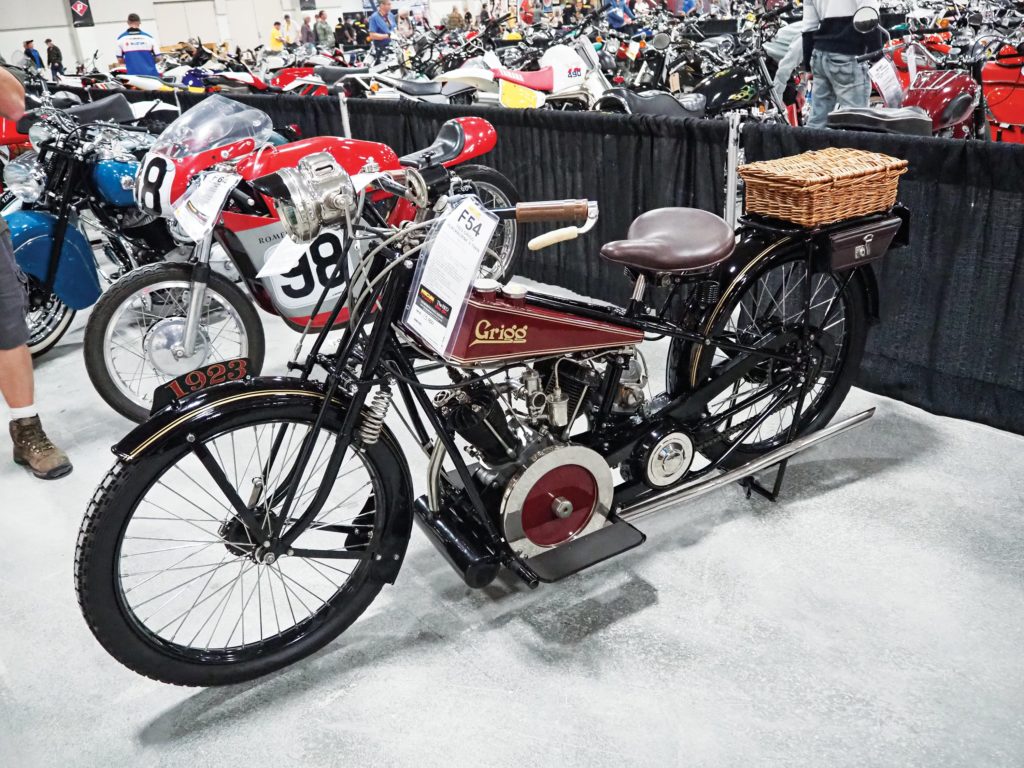
Aside from these headliners, you can see for yourself what happened on any day of the Las Vegas Mecum Auction on YouTube and Mecum’s website (www.mecum.com). What you can’t do is feel what it’s like to be there, unless you go. So go!


